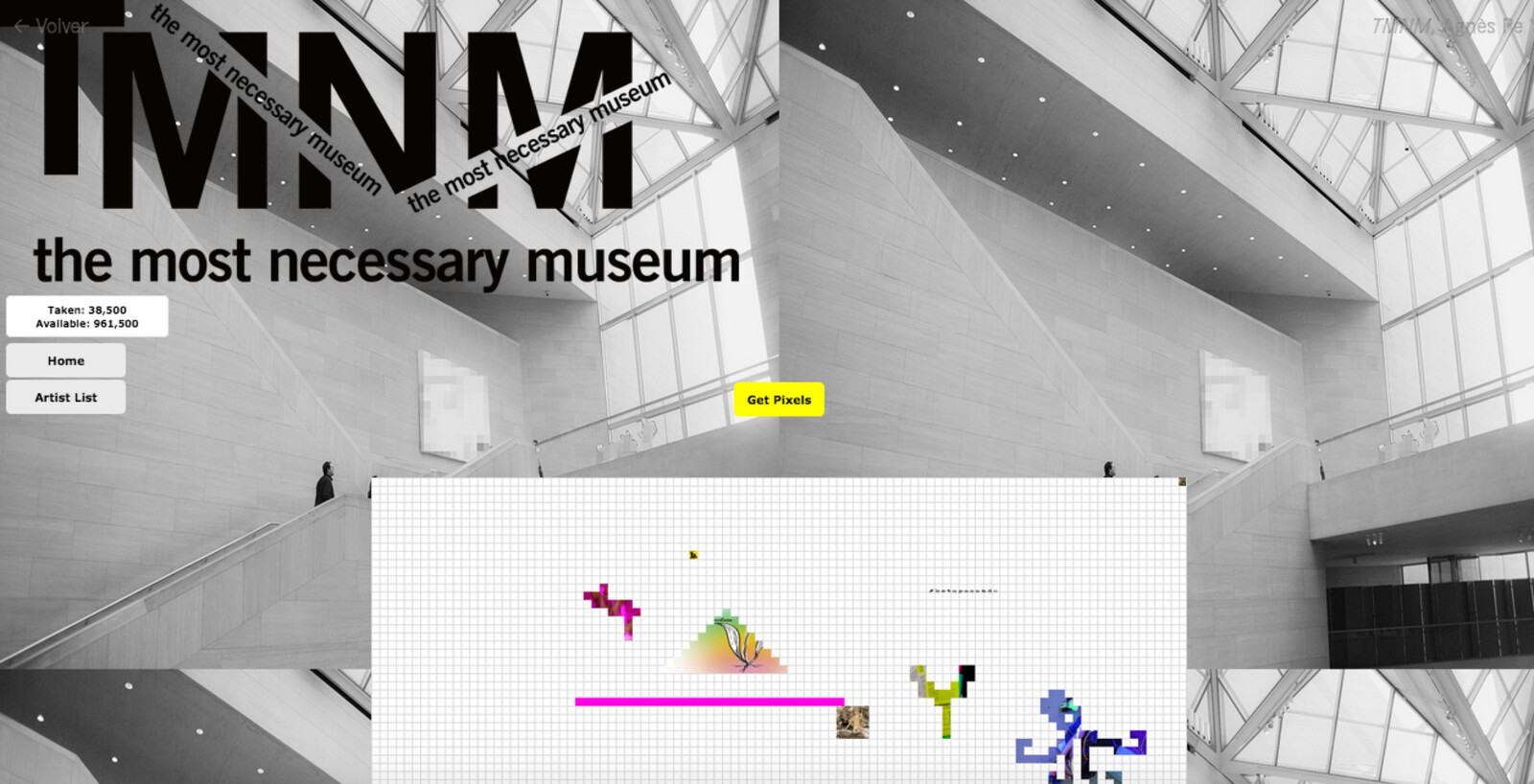A virtual exhibition on the internet’s hidden mechanisms
The Great Conspiracy, a virtual exhibition that plays with internet communication’s most common forms of enticement, from clickbait to junk mail subjects, is now online. Taking online communication as its framework of study, The Great Conspiracy offers the chance to experiment with artworks that use the logics of internet communication and other possibilities of distribution.
Coordinated by Spain’s Royal Academy in Rome, the show brings together works created specifically for the virtual medium by five Spanish artists. The creations assembled have materialised through an invitation by the exhibition’s curators—Manuela Pedrón Nicolau and Jaime González Cela—to reflect on the conditions of online contact and current forms of knowledge, with express consideration of telecommunications logics.
The five works presented here were created in 2020 to be contemplated on digital devices, from anywhere with an internet connection, and, from divergent standpoints and strategies, the exhibition enables the Net’s hidden mechanisms to be viewed and experimented with, mechanisms which are invisible to our eye.
“The Great Conspiracy is a project that must be visited numerous times and playfully explored, because its DNA means that it mutates, changes and grows. This project enhances the digital realm given that it will now have to co-exist with the physical sphere,” explains Ángeles Albert, director of Spain’s Royal Academy in Rome.
The five projects in The Great Conspiracy:
Clara Montoya applies methods of digital cartography to consider how distant places are accessed through images and sets forth Nomads, a virtual hitch-hike, a cyclical journey with no destination, made up of myriad sketches that could take the viewer fifty-odd years to complete; in her work TMNM (The Most Necessary Museum), Agnès Pe places the stress on advertising in the history of the World Wide Web, overhauling one of the landmarks in internet commodification; and Marc Vives submerges spectators in a dark well with Pou, a project in which he remixes sound archives that circulate on the Net as an antidote to visual overload.
For their part, Paco Chanivet puts forward leaps between the virtual and the physical in Palimpsest via narrative resources of science fiction, suggestion and hyperstition; approaches around self-fulfilling prophesies with key reference points in Mark Fischer and CCR; and Francesc Ruiz designs Postal Service, a series of materials and actions to short-circuit national mail system logistics.
A visual support created specifically for the show
Inside the site, which serves as an exhibition space and has been created expressly for the project by HYPER STUDIO, the show unfolds in a journey of numerous possibilities, enabling visitors to browse the different pieces and content.
This virtual space does not respond to commonplace codes and structures in commercial websites, nor does it replicate the conditions of a physical exhibition space. Rather, it is a shifting space that varies from visit to visit, depending on the time and place from which it is accessed, and is structured around related positions centred on the network of cities that sculpt the project.
A parallel programme of encounters with the artists
The Great Conspiracy’s virtual dimension is also accompanied by a programme of digital encounters which stretch from its unveiling to the first quarter of 2021; thus, each of Spain’s Cultural Offices in Brussels, Lisbon, London and Washington, and Spain’s Cultural Centre in Montevideo, will host talks by the artists participating in the project and will see them engage in conversation with the resident artists in the cities mentioned above.
The project is part of Spanish Cooperation’s Ventana (Window) Programme and is supported by the Spanish Agency for International Development Cooperation (AECID) and coordinated by Spain’s Royal Academy in Rome.
This project, which becomes a space of experimentation for online artistic practices, is joined by different Cultural Offices and Cultural Centres from Spanish Embassies in another five countries—the USA, Great Britain, Portugal, Belgium and Uruguay—materialising in a network-based project that moves beyond the limits of the virtual realm.





